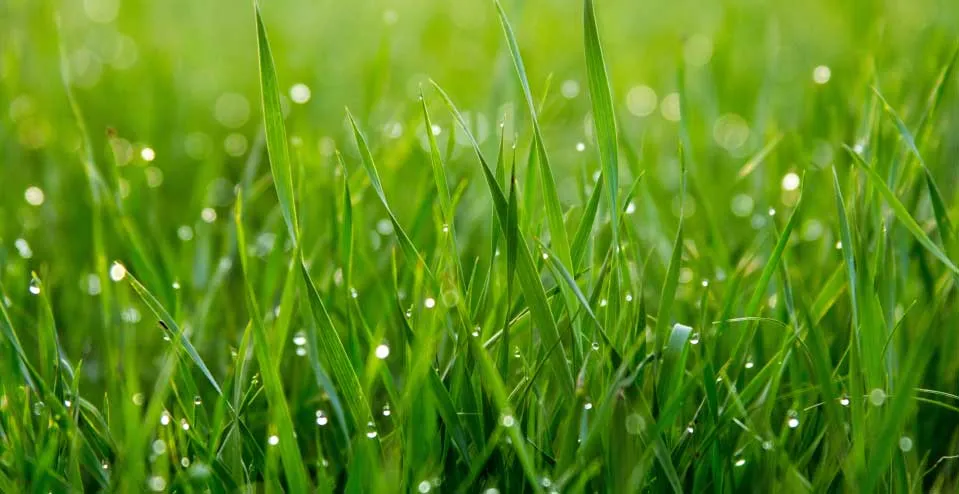Lawn Care Tips

Spring Lawn Care Tips
As winter ends, it’s time to prepare your lawn for the growing season. Start with your first mow, ensuring your mower blades are sharp and your lawn is dry. Avoid cutting the grass too short, as it stresses the grass and encourages weed growth. Keep your grass at 2½-3 inches and never remove more than 1/3 of its height.
Dethatching in early spring is essential to remove dead organic matter and improve water and nutrient absorption. Power rake your lawn, then collect and dispose of the debris to promote healthier growth.
Grass Length & Mowing Tips: Mow your grass at the proper height to reduce stress, encourage deep root growth, and block sunlight from weeds. Alternate mowing directions to prevent ruts and make sure your blades are sharp for a clean cut. Always mow when the grass is dry to avoid spreading fungus and weed seeds.
Recycling Grass Clippings: Leaving grass clippings on your lawn helps return nutrients, improving soil health. Avoid this if you have crabgrass, as it can spread unwanted seeds.
Watering: Your lawn needs 1-1½ inches of water weekly. Water deeply once a week instead of light daily waterings to encourage deeper roots. If there’s a drought, it’s better to let your grass go dormant than provide inconsistent watering.
Summer Lawn Care Tips
Summer can be tough on your lawn due to heat and dryness. To keep your grass healthy, continue mowing regularly but avoid cutting it too short, as this can stress your lawn. Stick to the recommended height of 2½-3 inches to provide shade for the soil and reduce water evaporation.
Watering: Water early in the morning to minimize evaporation. One deep watering per week is best, giving your lawn around 1-1½ inches of water. Avoid frequent shallow watering, as this can lead to weak root systems.
Pest and Weed Control: Summer is a prime time for pests and weeds. Stay on top of insect and grub control, and consider spot treatments for weeds to prevent them from spreading.
Fall Lawn Care Tips
Continue mowing until your lawn stops growing in late fall. Your final mowing should be slightly shorter than usual, but not too short to avoid frost damage. Remove fallen leaves and debris to prevent moisture buildup and lawn damage over winter.
Fall is also the ideal time for aeration, reseeding, and overseeding to strengthen your lawn before the colder months.
Lawn Care FAQ’s

For liquid treatments, wait 24-48 hours before mowing. For granular treatments, we recommend waiting 2-3 days to ensure the product has fully absorbed into your lawn.

Yes, it's best to mow 2-3 days before any lawn treatment. This helps ensure that the treatment reaches the soil more effectively.

For liquid treatments, it's important to stay off the lawn for at least 4 hours to allow it to dry. For granular treatments, you can use your lawn right away.

For granular treatments, water your lawn thoroughly right after the application. For spray (liquid) treatments, wait 24-48 hours before watering to allow the treatment to take full effect.

No, mowing crabgrass does not kill it. In fact, mowing can cause crabgrass to grow flatter and wider, making it harder to eliminate. Crabgrass continues producing seeds until winter or until it is properly treated. Each plant can produce over 150,000 seeds per year, so it's crucial to address crabgrass early to prevent bigger issues the following season.

No, leaving grass clippings on your lawn is actually beneficial. Grass clippings decompose quickly and return valuable nutrients like nitrogen, phosphorus, and potassium to the soil, helping your lawn stay healthy and strong.

No, cutting your grass too short can stress it and lead to more problems. Mowing too short makes your lawn more vulnerable to weeds and slows its recovery. It's best to keep your grass at 2½-3 inches and avoid removing more than 1/3 of its height during each mow.

No, daily watering isn't necessary. Your lawn only needs about 1-1½ inches of water per week. It's better to water deeply once a week rather than shallow watering every day, which can weaken your lawn’s root system.

No, providing minimal water during a drought can harm your lawn. If water restrictions prevent proper watering, it's best to let your grass go dormant. Dormant grass may turn brown, but it will recover once it rains.

Yes, your lawn needs fertilizer. While nature supports growth, your lawn is not in a natural environment. Regular mowing depletes nutrients, so fertilizer is essential to restore your lawn’s health.

No, spiked shoes are not effective for aerating compacted soil. Proper aeration requires removing soil plugs, which improves air, water, and nutrient absorption. Core aeration is the best method for promoting healthy root growth.

No, fall is the best time to seed your lawn. Planting grass in the fall allows it to establish strong roots before winter, ensuring healthier growth in the spring.
What Our Customers Are Saying
With my work schedule, I have little time for lawn care. Aberdeen Lawn Care makes my yard look great, at an affordable price!
I have used the summer lawn care package for a couple of years now. My lawn looks amazing from where it started thanks to Aberdeen Lawn Care!
I just want to say thank you to Nick. I just bought a Green Mountain Grill from him. This is my 2nd one I have gotten from Nick. His customer service is great!
Ready to Transform Your Lawn?
Contact us today for a free quote and see the difference local expertise makes.
Contact us

